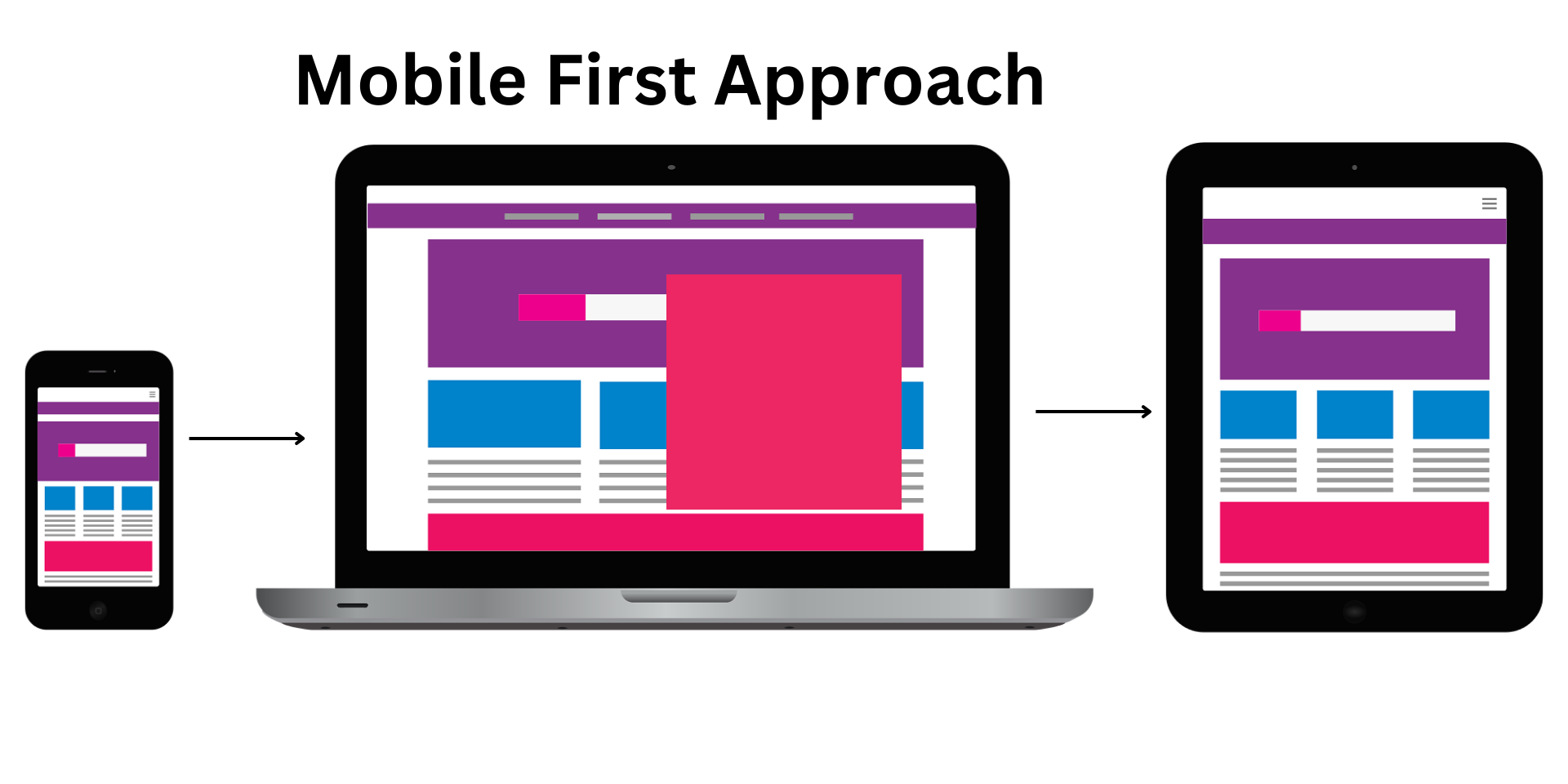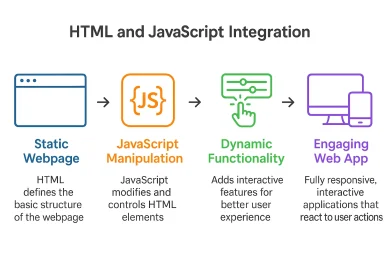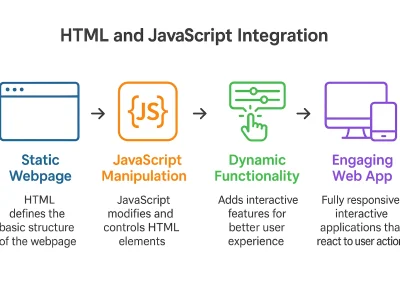Introduction to Mobile-First Design
Mobile-First Design- not just another next-door option.
In today’s digital-centric landscape, the mobile phone is the resort for all your needs namely- shopping, home essentials, mood swings, food delivery, etc. The increasing reliance on mobile phones has persuaded the need for mobile-first designs in website development.
The statistics from certain sources reveal that in the United States of America (USA), adults spend more than 5 hours of their day with more than 95% of users accessing websites via their mobile phones.
This mobile phone wave isn’t just another technology trend, it is a revolution wherein designing for mobile phones takes absolute priority over desktops. It is important to understand the primary objective of the ‘mobile-first design’ concept i.e. developing the website for mobile user experience first and then modifying it for larger screens. While mobile-first websites are merely websites sized down, the current trend of ascending order of design caters to the demand of new users who want a unified user experience.
The primary objective of this article is to understand the importance of mobile-first design in today’s mobile-centric setting including- Key benefits, Key principles, Implementation, Challenges, Solutions, and most importantly Future trends.
Core Principles of Mobile-First Design: Performance, Utility, and Aesthetics
To understand the importance of Mobile-First Design it is imperative to dive deep into the principles of the concept. The fundamental philosophy of mobile-first design revolves around initiating the development based on the smallest screen, the mobile phone screen, and concluding it with the biggest screen like tablets or desktop screens. The mobile-centric philosophy includes a strong emphasis on 3 key elements, namely performance, utility, and aesthetics.
Firstly, the importance of Performance arises due to inconsistent network conditions (including WiFi and patchy cellular network connections) varying from each user, geographical location, and distinctive processing capabilities of devices. Accordingly, the crux of mobile-first designs is ‘fast loading time’ which can be generally achieved through the following- efficient minified coding (by reducing the file sizes), high-quality optimized images (using appropriate formats and compressing without compromising the quality), and efficient browser caching.
Secondly, Utility is equally significant given the smaller screen interaction and touch screen accessibility. Mobile-first designs tend to prioritize thumb/finger accessibility by including simplified menus, easy navigation panels, well-defined call-to-action, and easy clickable elements i.e. options, forms, links, etc.) with adequate spacing to prevent accidental mistouches. Moreover, mobile-first designs focus on the visual positioning of elements to ensure important content is easily visible to the users to promote user engagement.
Lastly, aesthetics forms the foundation of mobile-first designs. While complex visuals may be resource-concentrated, mobile-first designs emphasize neat layouts, structured interfaces, and optimum utilization of white spaces. Moreover, careful consideration is paid to typeface to enhance readability and legibility.
The mobile-centric approach in designing is in absolute contrast with the traditional desktop-first design, wherein the mobile-first approach was a poised dilapidation. Further, it differs from receptive retrofitting which automatically modifies desktop websites for mobile phone users. Mobile-first approach designs the user approachability from scratch.
Why Mobile-First Design Matters?
Why do you think mobile-first designs matter? Well- you will understand it better once you know the numbers. Globally, over half of the website traffic is via mobile phones. This is not just another vogue; it is the veracity of the technology wave directly affecting the online user experience and interaction. Mobile-first designs pave the path for enhanced user experience through instinctive navigation, enhanced touch targets, and faster loading time- imperative especially when users are on the go.
Further, these designs are essential for SEO success as well. Google’s mobile-first indexing refers to the idea that Google uses any website’s mobile version for indexing and ranking. Accordingly, websites perform exceptionally well on mobiles, especially in core web vitals i.e. loading time, movement of layout elements, user interaction, and page responsiveness, amongst others. By providing a smooth experience, organizations see increased revenue, higher engagement, and lower bounce rates.
Mobile-First Design Principles for Better UX and SEO
Several principles underlying mobile-first design promote optimum user experience (UX) and search engine optimization. One of the principles focuses on content i.e. emphasising critical content (including simple language) and retaining neat web layouts for enhanced readability. Incorporation of the principle of advancing disclosure (i.e. gradually revealing details) is important to enhance user engagement. Further, effortless navigation is vital for intuitive touch interaction; structured content using dropdown options and collapsible categories for better UX.
Further, fast responsive web design layouts including flexible grids, scalable fonts, and media queries, ensure smooth adjustment to bigger screens, increasing user engagement. Concludingly, it is important to understand that mobile performance optimization is crucial for various reasons including SEO.
Top Benefits of Mobile-First Design for Websites
Is your business ready for success? Well, mobile-first designs offer a lot of benefits that will steer your business towards exponential growth.
Firstly, the primary benefit of these designs is- Scalability i.e. designing for mobile phones makes it easier and more adaptable by scaling to larger screens and increasing user interaction. The second most important benefit includes the lighting-fast speed of loading time.
Typically, we live in a one-tap era, wherein everyone wants convenience at the click of a button. Mobile-first designs cater to this specific need of individuals who believe in a ‘fastest finger first’ approach. These benefits proportionately influence core web vitals and Google index ranking, driving SEO success. As the statistics depict, mobile-first designs ascendingly boost user engagement and interaction rates.
Lastly, it is important to perceive that mobile-first designs offer a competitive edge to businesses by strategically positioning to attract a larger audience base which ultimately drives conversions and revenue.
How to Implement Mobile-First Design: Step-by-Step Guide
Implementation of a mobile-first design strategy requires several key steps, including:
- At the outset begin with the designing of a mobile wireframe i.e. a blueprint of the layout including a content-first approach and inclusion of touch-friendly navigation. The design of the blueprint establishes a strong foundation for an enhanced UX.
- Deploy CSS (Cascading Style Sheets) media queries to ensure smooth modification of the website to various screen sizes. It is important to conduct various cross-devices, and user responsiveness tests to authenticate the user experience. Another important strategy to implement includes gradual enhancement i.e. addition of enhancements and features for increasing screen sizes, of the elements and content to ensure a unified experience across all devices.
- Lastly, it is extremely important to test the ground waters i.e. rigorous cross-device testing and validation of the user experience and engagement. For instance, you can make use of tools such as Google Page Speed insights to consistently scrutinize the mobile performance metrics including core web vitals.
Common Challenges of Mobile-First Design
Well, we always have two sides of the same coin. Similarly, with numerous benefits come several challenges. One such key challenge is balancing the strategy of minimalism and utility. The approach of a neat interface tends to affect the inclusion of certain key elements.
As a developer, it is important to balance out the two for the development of a user-friendly platform. Another challenge includes prioritizing of gradual disclosure of information to keep the attention of the user intact and take them through the comprehensive information available. This in turn promotes the idea of ‘User should be aware’.
Another challenge arises in screen adaptation wherein it is important to forecast the design and visual issues encountered. Accordingly, maintain visual lucidity and make appropriate use of fluid grids and dropdown boxes to structure the content and avoid white spaces in desktop views.
Lastly, the most common hurdle involves creating the clients regarding mobile-first strategies. Typically, organizations believe in a descending approach; however, it is advisable to have specific interaction sessions to educate the organizations with corresponding statistics and research to help them modify their approach.
Future Trends in Mobile-First Design
In this technology-driven world, the future of mobile-first design is vibrant and thrilling with several emerging trends which solidify its prominence. One such trend is the voice-first interaction. With the increasing prevalence of voice assistants like Google and Siri, the inclusion of voice commands and interactions in mobile-first designs shall become a necessity in the days to come.
Further, the integration of artificial intelligence (AI) and its tools is boosting personalized user experience. AI can effortlessly analyze user behavior and tailor it to its requirements using content and reach-back strategy. Furthermore, the trending Progressive Web App framework is providing the user with a collective experience of websites with mobile applications within the browser.
By implementing a strong mobile-first strategy from the beginning, organizations and developers can mutually incorporate these technologies to revamp the definition of user experience.
Conclusion
For businesses aiming for sustainability in a competitive, tech-driven market, mobile-first designs are essential. Prioritizing this approach can boost revenue and expand the consumer base. Developers and organizations must recognize that mobile-first is not optional but a key strategy for success. It fosters user trust and enhances user experience. Now is the time to strengthen your digital presence and prepare for unprecedented growth!
Well, we understand that this guide will make you want to master the mobile-first approach and implement it right away! Join our UI/UX Designing Course, future-proof yourself, and make your clients stand out.
Share and bookmark this guide for your ready future reference.





